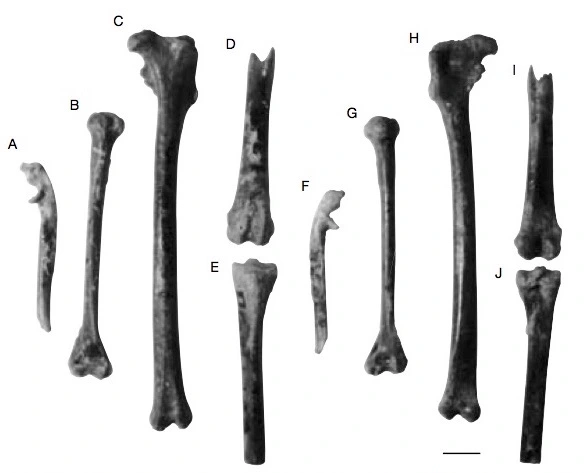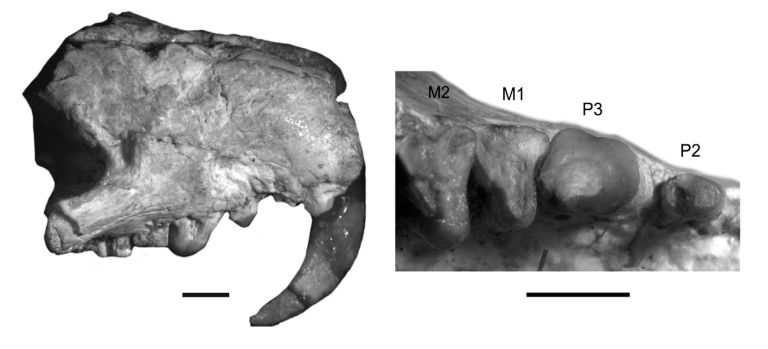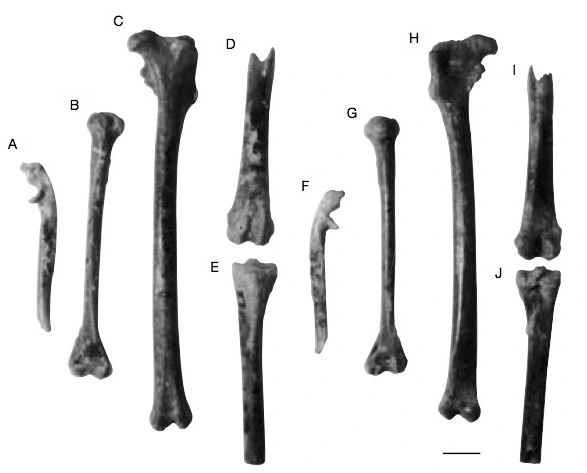As far as we know, true (powered) flight has only evolved once in mammals: in bats (order Chiroptera). Gliding, on the other hand, has evolved many times in a wide variety of groups. Gliding (“flying”) squirrels (family Sciuridae) are abundant in many temperate and tropical parts of the Northern Hemisphere, though small species often go completely unnoticed because they are secretive and nocturnal. Certain African forests are home to a group of gliding rodents known as scaly-tailed squirrels (family Anomaluridae) that are rather distantly related to true squirrels. The forests of southeast Asia are home to colugos, the largest flying mammals and members of their own order, Dermoptera. Among the marsupials of Australia and New Guinea, gliding evolved at least three times, in the families Petauridae (including the doe-eyed sugar glider, common in the pet trade), Acrobatidae (feather-tailed gliders, an apt name), and Pseudocheiridae (a single gliding species, the greater glider, Petauroides volans). And this is only a tally of modern gliding mammals. Thanks to some extraordinarily well-preserved fossils, gliding has also been documented in extinct eomyid rodents (order Castorimorpha; see Storch et al. 1996) and Volaticotherium, a mammal from the Mesozoic Era (Meng et al. 2006). Both of these specimens preserve soft tissues, including a gliding membrane.
If so many mammals have evolved gliding, then why is South America the only continent today without a gliding mammal, particularly considering its extensive tropical forests and rich mammal diversity? One possible answer is chance. Perhaps no group of South American mammals ever evolved a mutation leading to gliding. Another intriguing possibility is that there were once gliding mammals in South America, but they just did not survive to the present day. This latter idea is speculative, but there are tantalizing hints that a small marsupial was gliding through South American tropical forests some 55 million years ago.

The fossils of this small mammal come from a particularly important site in Brazil known as Itaboraí, which is located about 60 km northeast of Rio de Janeiro. This is a rather unusual site for extinct South American mammals because the fossils were preserved in limestone fissures (essentially small caves) rather than in river-associated sediments. The fossils mostly consist of teeth, jaws, and limb bones that were washed into the crevices from the surrounding countryside, though some more complete specimens have also been collected. On the one hand, this site has been a boon for paleontologists, because these fissures preserved many small, delicate teeth and bones that might otherwise never have been discovered. On the other hand, most of these specimens were mixed together when they were washed into the fissures, meaning that it is not known with certainty which limb bones go with which teeth. Since most of these mammals were named and identified based only on their teeth (55 of 56 species; the exception is a large mammal called Carodnia vieirai), most limb bones cannot confidently be assigned to a particular species. Determining which limb bones go together is also a challenge, though their relative size and other features can provide useful clues.
Notwithstanding these difficulties, a pair of researchers (Fred Szalay and Eric Sargis) undertook a detailed study of more than 130 marsupial limb bones from the site in an effort to shed light on the early evolution of marsupials in South America. They sorted the specimens into 13 groups, one of which stood out in its striking combination of features: a long, thin humerus (upper arm bone); a long, thin femur (upper leg bone); an elbow joint that may have been able to lock when the arms were fully extended; a knee joint suggestive of leaping abilities; and a highly flexible ankle joint typical of a tree-living mammal. Moreover, the relative lengths of the bones are more similar to those of gliding mammals than terrestrial or arboreal ones. Therefore, it seems that at least one gliding marsupial was living at Itaboraí.
What should you call this Itaboraí glider? According to Szalay and Sargis, your best bet would be to call it Gaylordia macrocynodonta, a chipmunk-sized Itaboraí marsupial* with teeth that seem to match these limb bones in size. If this association is correct, then two species may have been gliding from tree to tree at Itaboraí, as two species of Gaylordia are known from the site (see Oliveira and Goin 2015). The large, laterally compressed canines of G. macrocynodonta and its heavily worn posterior premolars and anterior molars indicate that it may have been carnivorous and used its teeth for crushing bones and/or particularly hard invertebrates. Its specific epithet, which means “large dog tooth,” alludes to its distinctive teeth. Most living gliders are omnivorous to herbivorous, so a predaceous or bone-crushing species would be unusual indeed. It is also possible that these bones belong to another Itaboraí species that may or may not already be known from teeth.

Although there was no previous indication of a glider at Itaboraí before the study of Szalay and Sargis, in retrospect, it makes sense; this area was likely covered by forest during the early Eocene, and many (most?) modern forests are home to at least one type of gliding mammal. Considering the number of times gliding has evolved independently in mammals, the absence of a single gliding species among all South American mammals would be astonishing. Perhaps the most remarkable aspect of this realization is the discovery itself, which resulted from piecing together jumbled bones rather than finding a spectacular specimen with a gliding membrane. It is likely that a variety of other extinct gliding mammals remain to be discovered both in South America and in other parts of the world. One can only wonder where in the fossil record the next one will appear.
* A recent phylogenetic analysis by Oliveira and Goin (2015) suggests that Gaylordia diverged from other marsupials before the common ancestor of living species and therefore is technically a non-marsupial metatherian.
References cited:
- Meng, J., Y. Hu, Y. Wang, X. Wang, and C. Li. 2006. A Mesozoic gliding mammal from northeastern China. Nature 444:889-893.
- Oliveira, E. V., and F. J. Goin. 2015. A new species of Gaylordia (Mammalia, Metatheria) from Itaboraí, Brazil. Revista Brasileira de Paleontologia 18:97-108.
- Storch, G., B. Engesser, and M. Wuttke. 1996. Oldest fossil record of gliding in rodents. Nature 379:439-441.
- Szalay, F. S., and E. J. Sargis. 2001. Model-based analysis of postcranial osteology of marsupials from the Palaeocene of Itaboraí (Brazil) and the phylogenetics and biogeography of Metatheria. Geodiversitas 23:139-302.

2 thoughts on “Reading between the bones”